I don’t know about you, dear readers, but I literally cannot wait for Wonder Woman to appear on our screen on June 2. I tell random strangers about it. I rage about the lack of advertising for this movie on a regular basis. And if it is as….unfulfilling…as the other DC films in this franchise have been, I will eat my proverbial hat.

But I digress…in the midst of scouring the internet for excellent information on this most wonderful of superheroes, I noticed a whole ton of articles regarding the now oft-remarked ‘Bechdel Test’, and I had a few thoughts about it that I wanted to share.
For background, the ‘Bechdel Test’, is not really a ‘test’ in the same way, say, a ‘Driving Test’ is a test, or a ‘Blood Test’ is a test. It is, instead, a way of thinking about the presence of women in films, the ways in which they are represented, and whether they get to be fully human. The idea came from American cartoonist Alison Bechdel, who drew the follow comic for her regular strip in 1985:
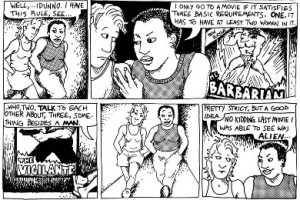
In case you can’t read it, the rules are:
- The movie has to have at least two women in it,
- who talk to each other,
- about something besides a man.
Bechdel based her test on a quote from the great and glorious Virginia Woolf, who wrote in a 1929 essay:
All these relationships between women, I thought, rapidly recalling the splendid gallery of fictitious women, are too simple. […] And I tried to remember any case in the course of my reading where two women are represented as friends. […] They are now and then mothers and daughters. But almost without exception they are shown in their relation to men. It was strange to think that all the great women of fiction were, until Jane Austen’s day, not only seen by the other sex, but seen only in relation to the other sex. And how small a part of a woman’s life is that
In other words, despite the fact that real women’s lives are shaped by personal relationships with other women, very, very few forms of fiction (particularly film) represent those relationships. Instead, women are shown as single, isolated entities who support men’s journeys. If more than one woman is portrayed, it is usually because one (or both of them) is trying to attract the love/attention/desire of a male hero.
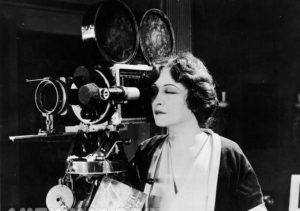 The Bechdel Test isn’t perfect. To highlight one example, the assumption that any discussion of a man makes a movie “anti-feminist”. But the point of the test has raised a good deal of debate within film circles, and helped to emphasize how far we really have to go to achieve any nominal sense of equality in our representations. For example, an article in The Wrap cites a study conducted by by Professor Stacy L. Smith and the Media, Diversity & Social Change (MDSC) Initiative at USC’s Annenberg School for Communication and Journalism. The study examined the 100 top-grossing films from 2015 and 4,370 speaking characters for gender, racial/ethnic representation, and LGBT status. The results?
The Bechdel Test isn’t perfect. To highlight one example, the assumption that any discussion of a man makes a movie “anti-feminist”. But the point of the test has raised a good deal of debate within film circles, and helped to emphasize how far we really have to go to achieve any nominal sense of equality in our representations. For example, an article in The Wrap cites a study conducted by by Professor Stacy L. Smith and the Media, Diversity & Social Change (MDSC) Initiative at USC’s Annenberg School for Communication and Journalism. The study examined the 100 top-grossing films from 2015 and 4,370 speaking characters for gender, racial/ethnic representation, and LGBT status. The results?
68.6 percent of named characters were still male, and only 31.4 percent female across the 100 top‐grossing films of 2015 (making a gender ratio of 2.2 male characters to every female). This figure has not changed since 2007.
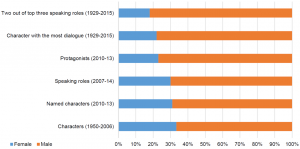
In addition, females were over three times as likely as their male counterparts to be shown in sexually revealing clothing (30.2 percent vs. 7.7 percent) and with some nudity (29 percent vs. 9.5 percent).
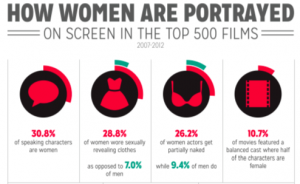
Additionally, this is also a great time to talk about the enormous disparity in film makers, as well. How are we supposed to tell new stories without new storytellers?
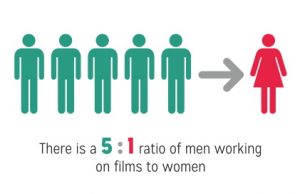
But in studying this material, I couldn’t help but think–what about men? How many men can you name in film or literature that have meaningful relationships with other men?
This week, Vulture magazine published an article that stated:
…but nothing has troubled filmmakers as enduringly as the mysteries of female bonding. For whatever reason — our inherited medieval imaginations, the cycles of the moon, perhaps — in their short life the movies have been perennially haunted by a fear that when two or more women are left alone together, some kind of dark magic will inevitably rear its head.
Interestingly, though, The Atlantic published an article a few years ago that discussed the very real difficulties that men suffered, especially in later life, keeping friendships. The reasons cited were: jealousy over friends’ personal and professional achievements, a lack of communication skills, and a society that teaches men not to express emotion. All of which indicate to me that this gendered structure we’ve set up here is hurting both women and men, forcing them to perform to strange, unrealistic expectations that are harming all of our individual and collective abilities to make connections.
So I figured we could explore some books today that celebrate close relationships that help pave the way towards thinking about relationships differently. If we’re going to make the world a better place, after all, it’s nice to have some blueprints!
 Three Comrades: We’ve discussed this book a lot since our Classics Book Group met this book last year. Most people were introduced to Erich Maria Remarque through his novel All Quiet on the Western Front, which focuses on the experience of young German soldiers in World War I. But Remarque wrote a great deal more than that, including this novel, which focuses on three German veterans of the First World War and the auto body/mechanic shop they open. The narrator of the book falls in love, yes, with a woman named Pat, but that love only brings these friends together more–indeed, rather than shunning her, or shying away from the couple, Pat becomes a member of their circle of friends. This is a story about love, friendship, loyalty and acceptance, and is absolutely unforgettable. Also of note here is the way in which Remarque portrays Berlin at the beginning of the Nazi rise to power. His love letter to a world about to fall is as heartbreaking as any experience of his titular Comrades.
Three Comrades: We’ve discussed this book a lot since our Classics Book Group met this book last year. Most people were introduced to Erich Maria Remarque through his novel All Quiet on the Western Front, which focuses on the experience of young German soldiers in World War I. But Remarque wrote a great deal more than that, including this novel, which focuses on three German veterans of the First World War and the auto body/mechanic shop they open. The narrator of the book falls in love, yes, with a woman named Pat, but that love only brings these friends together more–indeed, rather than shunning her, or shying away from the couple, Pat becomes a member of their circle of friends. This is a story about love, friendship, loyalty and acceptance, and is absolutely unforgettable. Also of note here is the way in which Remarque portrays Berlin at the beginning of the Nazi rise to power. His love letter to a world about to fall is as heartbreaking as any experience of his titular Comrades.
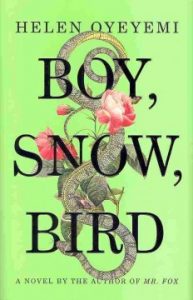 Boy, Snow, Bird: Helen Oyeyemi is a marvel at re-imagining traditional fables and fairytales with a contemporary edge, and feminist observations, and this book is a showcase of her remarkable talent. This story, which echoes the Brothers Grimm’s “Snow White”, emphasizes the female hatred so often found in fairytales, but with the broader canvas of the novel, and a richer story-line, Oyeyemi has woven a tale of racial tensions, familial jealousies, and complex relationships between the women. Though for much of the novel half-sisters Snow and Bird are separated by Bird’s mother, Boy, they begin to write letters to each other sharing snippets of family history as well as their own secrets and girlish curiosities about each other. Their friendship, in the end, is not about men, but about their mutual quest for a stronger kind of bond, and the sense of themselves they find in communicating with each other.
Boy, Snow, Bird: Helen Oyeyemi is a marvel at re-imagining traditional fables and fairytales with a contemporary edge, and feminist observations, and this book is a showcase of her remarkable talent. This story, which echoes the Brothers Grimm’s “Snow White”, emphasizes the female hatred so often found in fairytales, but with the broader canvas of the novel, and a richer story-line, Oyeyemi has woven a tale of racial tensions, familial jealousies, and complex relationships between the women. Though for much of the novel half-sisters Snow and Bird are separated by Bird’s mother, Boy, they begin to write letters to each other sharing snippets of family history as well as their own secrets and girlish curiosities about each other. Their friendship, in the end, is not about men, but about their mutual quest for a stronger kind of bond, and the sense of themselves they find in communicating with each other.
 Ancillary Justice: Ann Leckie’s novel doesn’t so much pass the Bechdel Test as leave it behind in the dust, as her Radchaii empire don’t care much about gender, and their language does not make distinctions between male and female. Moreover, Leckie’s choice to make the default gender distinction (which, in English is “he”) female makes the world of this book feel strangely alien. Once, the heroine of this tale, Breq, was a Justice of Toren –a colossal starship with an artificial intelligence linking thousands of corpse soldiers in the service of the Radch, the empire that conquered the galaxy. Now, she has nothing left but her desire for revenge against the many-bodied, near-immortal Lord of the Radch. But the real power of this book lies in Breq’s relationships with One Esk and Lieutenant Awn–two characters who are difficult to describe, as Leckie does such a wonderful job letting the reader conceptualize them on their own. Though not always an easy book to read, the characters and their bonds are so real and so believable that this story becomes a visceral treat that even readers who aren’t big sci-fi fans will enjoy.
Ancillary Justice: Ann Leckie’s novel doesn’t so much pass the Bechdel Test as leave it behind in the dust, as her Radchaii empire don’t care much about gender, and their language does not make distinctions between male and female. Moreover, Leckie’s choice to make the default gender distinction (which, in English is “he”) female makes the world of this book feel strangely alien. Once, the heroine of this tale, Breq, was a Justice of Toren –a colossal starship with an artificial intelligence linking thousands of corpse soldiers in the service of the Radch, the empire that conquered the galaxy. Now, she has nothing left but her desire for revenge against the many-bodied, near-immortal Lord of the Radch. But the real power of this book lies in Breq’s relationships with One Esk and Lieutenant Awn–two characters who are difficult to describe, as Leckie does such a wonderful job letting the reader conceptualize them on their own. Though not always an easy book to read, the characters and their bonds are so real and so believable that this story becomes a visceral treat that even readers who aren’t big sci-fi fans will enjoy.
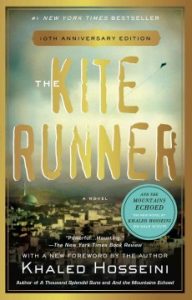 The Kite Runner: Not only is Khaled Hosseini’s story an emotionally wrenching tale of male friendship, but it also a perfect example of our “Reading Without Walls Challenge” books, too! The novel follows the story of Amir, the privileged son of a wealthy businessman in Kabul, and Hassan, the son of Amir’s father’s servant. As children in the relatively stable Afghanistan of the early 1970s, the boys are inseparable, spending idyllic days running kites and telling stories of mystical places and powerful warriors–until an unspeakable event changes their friendship forever. Amir and his father flee to America as the monarchy begins to crumble, but the ties between these two young men is too powerful to be severed, and years later, Amir’s yearning for his friend’s forgiveness will lead him on a journey to a home he can no longer recognize. Though this book deals a great deal with the pain that relationships can cause, Hossenini reminds us over and over again that they are still absolutely worth the pain, because they remind us who were truly are.
The Kite Runner: Not only is Khaled Hosseini’s story an emotionally wrenching tale of male friendship, but it also a perfect example of our “Reading Without Walls Challenge” books, too! The novel follows the story of Amir, the privileged son of a wealthy businessman in Kabul, and Hassan, the son of Amir’s father’s servant. As children in the relatively stable Afghanistan of the early 1970s, the boys are inseparable, spending idyllic days running kites and telling stories of mystical places and powerful warriors–until an unspeakable event changes their friendship forever. Amir and his father flee to America as the monarchy begins to crumble, but the ties between these two young men is too powerful to be severed, and years later, Amir’s yearning for his friend’s forgiveness will lead him on a journey to a home he can no longer recognize. Though this book deals a great deal with the pain that relationships can cause, Hossenini reminds us over and over again that they are still absolutely worth the pain, because they remind us who were truly are.
Happy reading dear friends!

I have been gone for some time, but now I remember why I used to love this web site. Thanks, I will try and check back more often. How often do you update your web site?